How to do virtual team brainstorming
May 9, 2023
(Adapted from my original Twitter thread)
I have landed on a repeatable process for virtual team brainstorming that I really like. It works well for remote and hybrid groups of up to 10-20 people, helps people feel like their ideas have been heard, and actually generates some great ideas.
At AWS, teams are encouraged to take time to brainstorm big new ideas for what their team could build as part of our annual planning process. Usually we’d get in a room with lots of post-its, but the last few years being mostly virtual meant finding new ways to brainstorm together. This post describes the process I have used for the last couple years with my teams to generate exciting new ideas.
TLDR for my virtual brainstorming process
- Individuals come up with ideas (10 - 15 minutes)
- Moderator presents pre-selected themes
- Individuals come up with ideas on those themes (10 - 15 minutes)
- Individuals present their top idea, group and/or moderator decides if we want to follow up
- (if time allows) Moderator does clustering of ideas and leads discussion about any new ideas or themes emerging
- (post-meeting) Moderator summarizes the above, and assign next steps
The brainstorming process in detail
For a virtual brainstorming session, book a meeting for 2.5 - 3 hours. My rule of thumb is 30 - 45 minutes + 8 - 10 minutes per person participating in the meeting. Beyond 3 hours, people get too restless to focus on brainstorming and brains get tired. Set up a dedicated virtual whiteboarding space for the meeting, shared with everyone participating in the meeting. I use Bluescape, but any virtual whiteboarding solution works.
Set up the virtual whiteboard with a box for each person’s ideas. The first step of the meeting gets people used to the virtual whiteboard UX by “claiming” their sticky notes and filling in their name. In my experience, these virtual whiteboard solutions are never fully intuitive and just learning how to pan, zoom, and fill in text takes time.
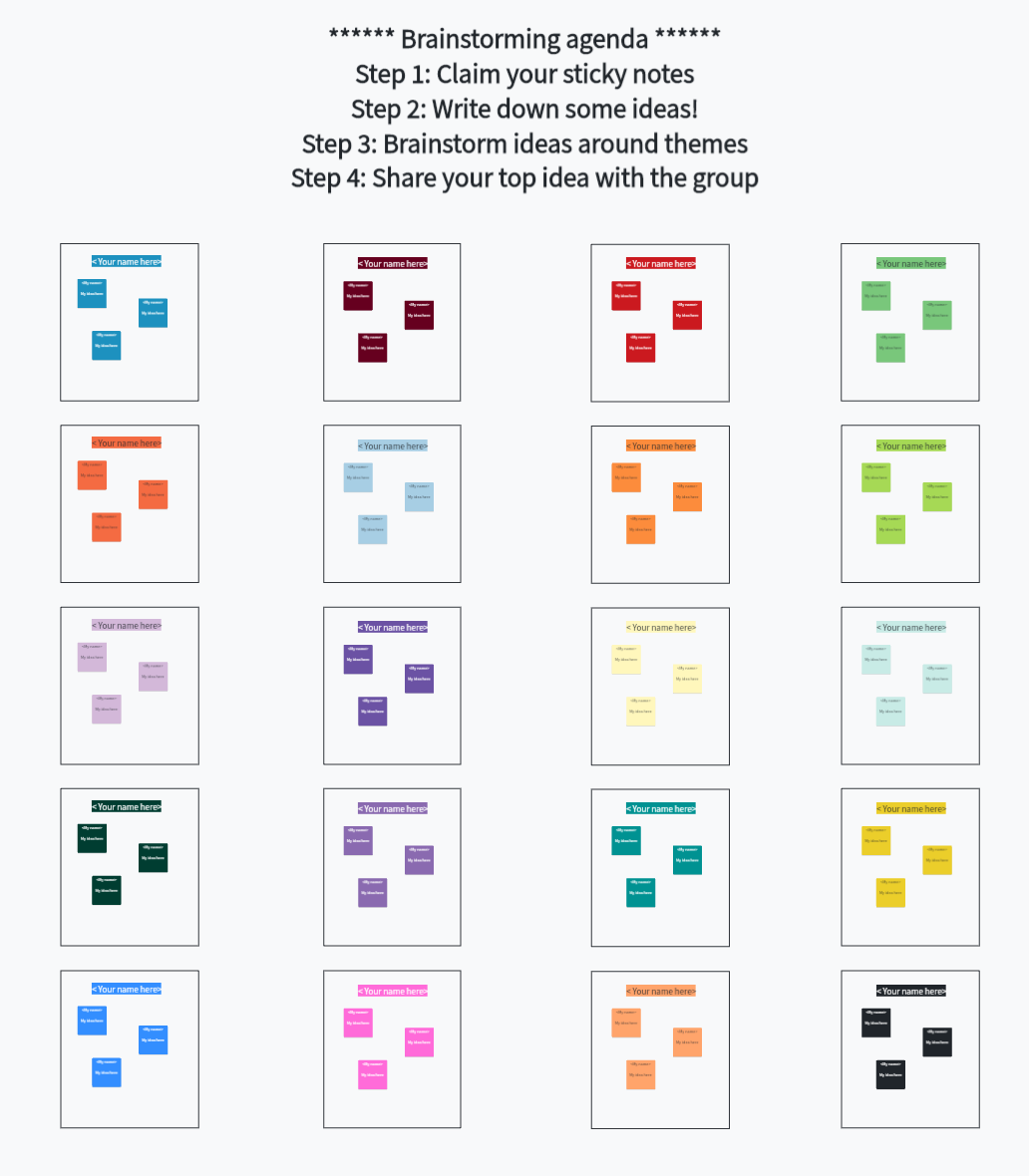 |
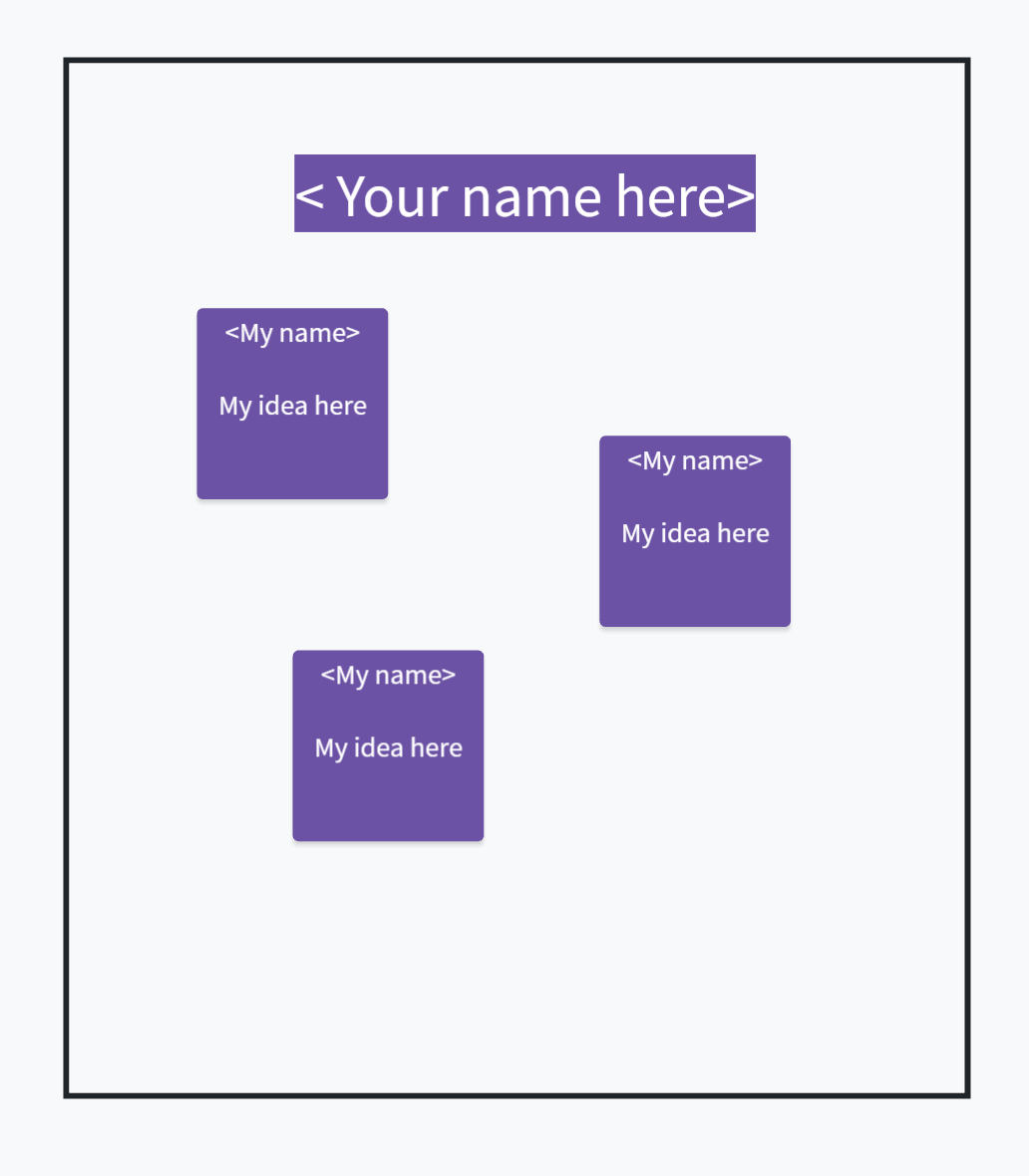 |
Next, spend some time doing open-ended, individual brainstorming to get the brain warmed up and ideas flowing, 10 - 15 minutes. People can create as many stickies as they want for whatever ideas are floating around in their head.
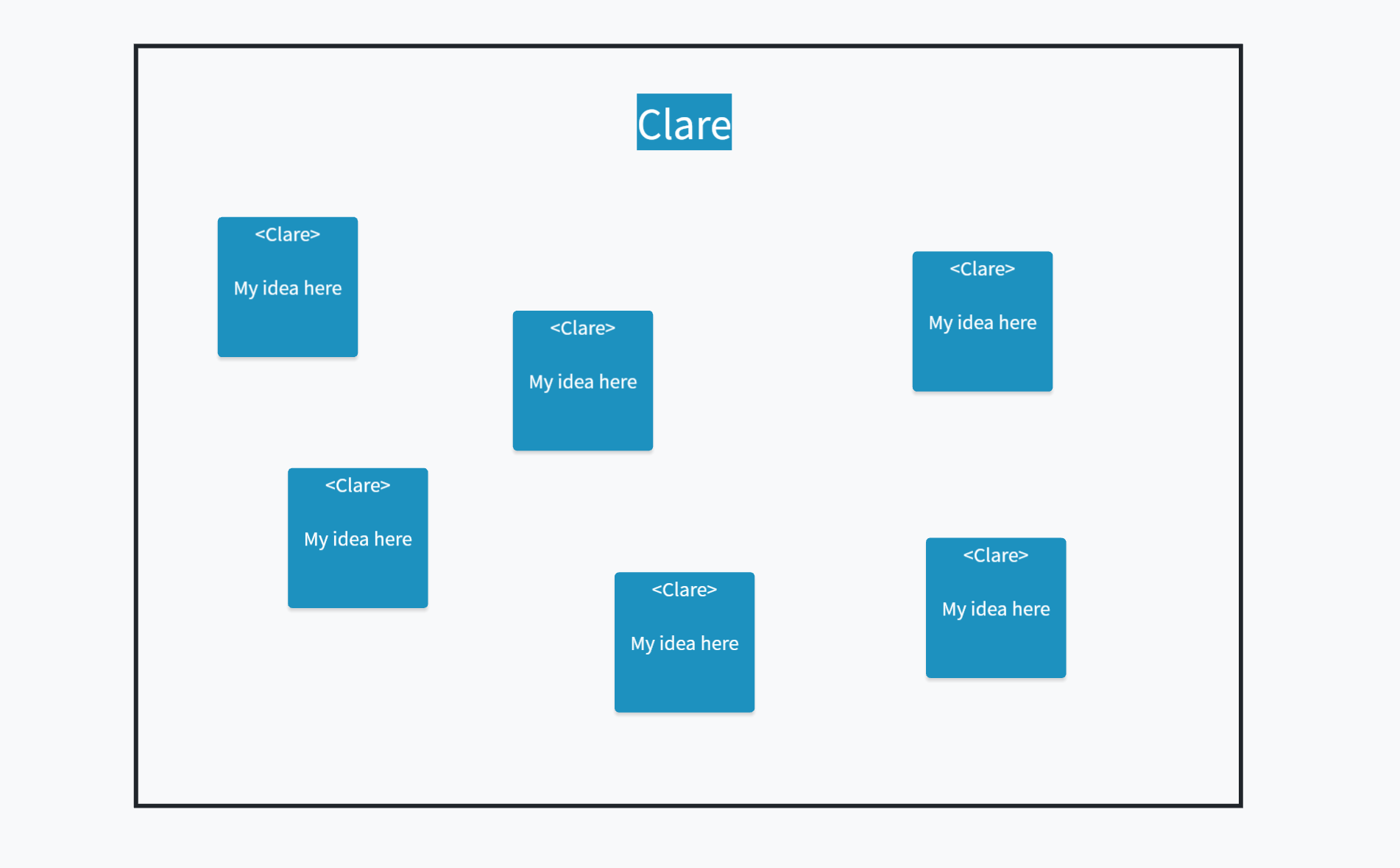
Next, do some guided brainstorming around themes that you have pre-selected prior to the meeting. Pick whatever themes you think are crucial for focusing discussion and ideas, max 5 or 6 themes. This part is really important for virtual brainstorming. In person, we feed off each other’s ideas and arrive at common themes more easily. But, I’ve found that we don’t get that same flow virtually without a bit of guidance.
In the virtual whiteboard, a “curtain” covers up the themes during open-ended idea time. Do a big dramatic reveal when it’s time for theme-based brainstorming by deleting the curtain box. Spend another 10 - 15 minutes doing individual brainstorming, but this time around the pre-selected themes. People can choose to focus in on one theme, or try to think up ideas along each one of the themes.
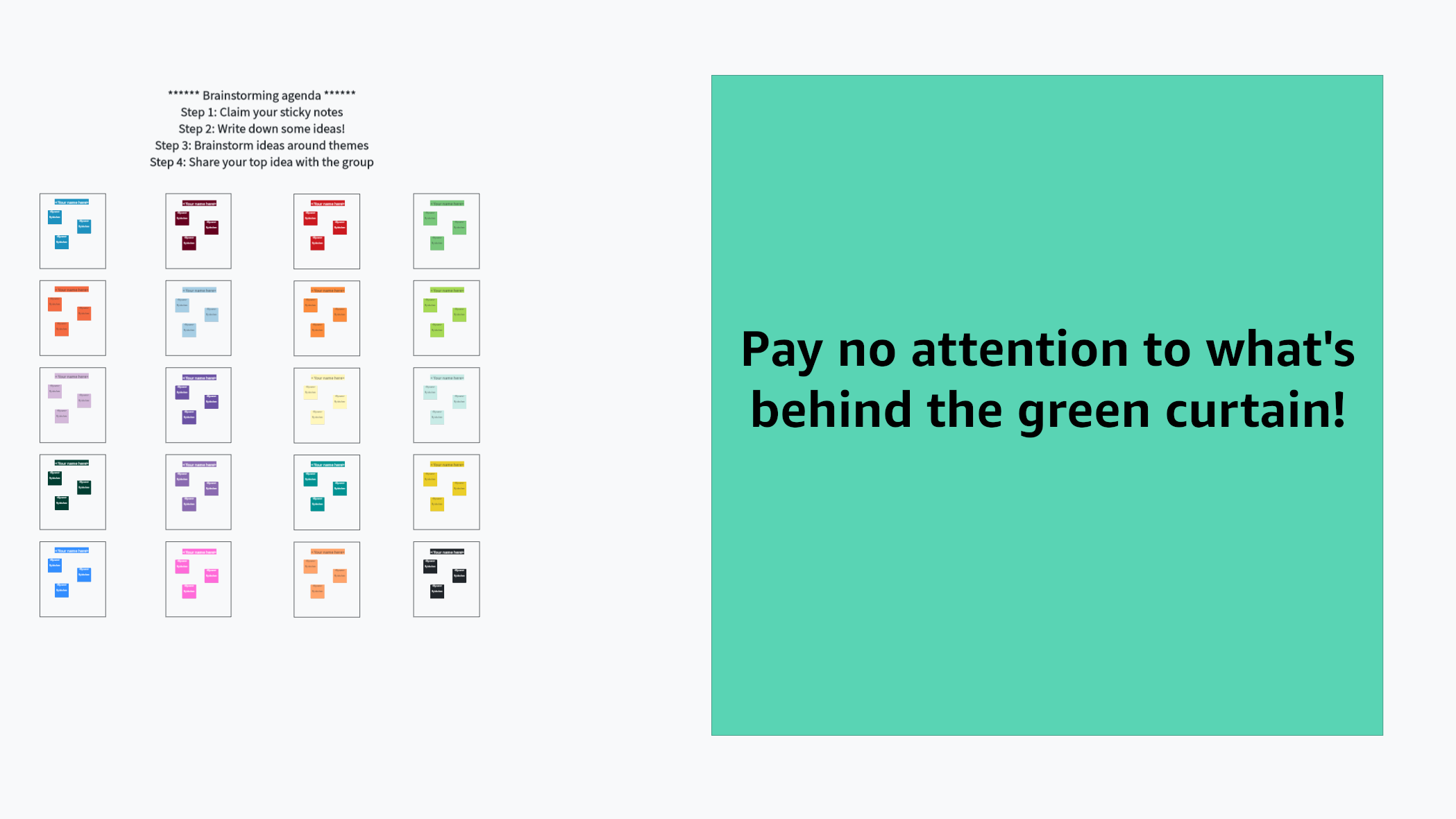
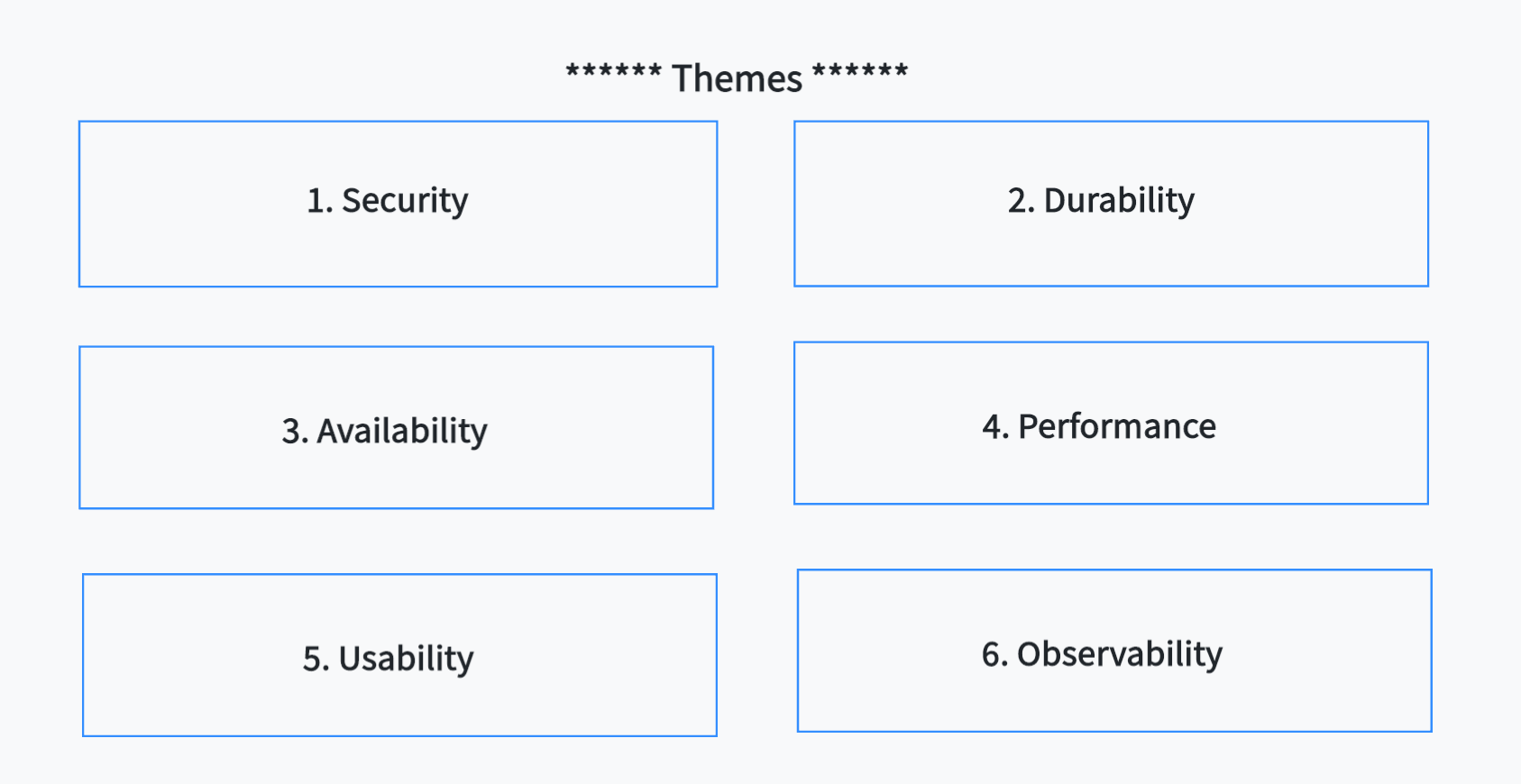
When all the individual brainstorming is done (~30 - 45 min in total), come back together as a group and share your screen with the whiteboard up. Each person shares their top idea with the group. I’ve found that 8 - 10 min per person is enough time to explain the idea, have a super short discussion, and decide if you want to follow up on the idea later.
If you have time at the end of the meeting, you can spend some time as a group moving stickies around to arrange them by theme, combine ideas, create new ideas, etc. After the meeting, send out a summary of the ideas you all generated and thank everyone for their brilliant ideas!